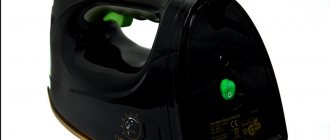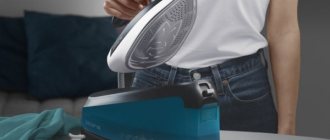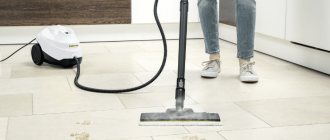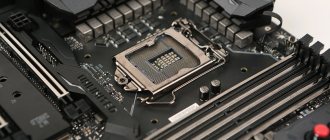A steam generator is popular in everyday life due to its ability to tidy up outerwear, suits, curtains, not to mention everyday things in a matter of minutes. This device moisturizes fabric much more effectively than classic irons, reducing the time spent on ironing and leaving it for a more enjoyable pastime.
Briefly about the design
A steam generator from any manufacturer: Tefal, Bosch or Philips, consists of three main parts: an electronic control unit, a stand, also known as a station, and an iron. The delivery set also includes special attachments. The boiler heats the water, producing steam, which is supplied through a special hose to the iron, which has perforations at the base. Coming out of the holes, the steam processes the material, smoothing out any wrinkles.
The density and size of clothing do not affect the quality of its processing: you can simultaneously process bed linen, fabrics that require delicate handling - for example, silk, as well as jeans, suits made of wool blends or synthetics.
A household steam generator station, for example, Tefal, has a number of differences from a steam iron from the same manufacturer:
- firstly, the size - it is much larger and takes up a lot of space;
- secondly, water is poured into a separate boiler container and heated there until steam is formed;
- thirdly, the steam is not wet, but dry with a temperature of about 160 degrees;
- clothes and linen are processed without touching them with a device in the form of an iron, but only with steam, so you don’t have to worry about the integrity of things.
The figure below shows a standard Tefal steam generator station.
Design and main malfunctions of Philips irons
Even for those who are not very well versed in technical issues, the structure of a modern steam iron will be clear. The operating principle of most ironing systems (regardless of the manufacturer) is the same.
Clean liquid is drawn into the water fill neck. When electricity is supplied to the device through the cord, the tubular electric heater (hereinafter also referred to as the heating element) begins to heat the sole along with the steam generator chamber. The heating temperature is regulated by rotating the thermostat.
At the top of the body, next to the handle, there are buttons and levers that regulate the steam supply. Water from the built-in container enters the steam generator chamber connected to the sole. When heated, the water becomes steam and exits through the holes in the base, penetrating into the fibers of the fabric.
Major damage
In any structure there are parts that are subject to more stress than other elements. They most often fail. In addition, the durability of electric irons is affected by:
- choosing the correct ironing mode;
- quality of water used for steam generation.
The table shows the most common breakdowns of Philips flat irons:
Damage to the integrity of the power cord is the most common failure. During ironing, the cable is repeatedly bent and twisted. As a result, the insulation or contact of one of the wires with the connector in the iron is broken. This may result in a short circuit or electric shock. If the contact in the connection is broken, it can be restored. When making repairs, replace the cord with a new one with heat-resistant insulation. As a last resort, temporarily isolate the exposed contacts
Due to scale, insufficient steam comes out of the holes in the sole and clothes are poorly steamed. The defect occurs with prolonged use of hard tap water.
Scale from the sole can be removed by immersing it in a concentrated solution of citric or acetic acid. To clean the base, you need to disassemble the housing. If you clean the steam holes well with a cotton swab dipped in a solution of vinegar or citric acid, you can get rid of this defect for a while
The thermostat does not regulate the temperature and the iron does not heat up . The reason, as a rule, lies in the fact that dust, dirt and lint from fabrics, which accumulate over time, interfere with the correct operation of the contact group of the temperature regulator. Because of this, voltage is not supplied to the heating element, or it turns off before the scheduled time. To restore functionality, you need to disassemble the body of the iron and clean the contact group in the thermostat. To clean the contacts, you can use fine sandpaper or any sharp metal object.
A breakdown of the tubular electric heater often results in the iron not heating up. Since the heating element is built into the soleplate, replacing it in terms of financial costs is comparable to buying a new iron. To check the integrity of the part, you need to disassemble the ironing device and test the heating element with a multimeter (see photo). If the heater is working properly, its resistance should be in the range of 20–45 Ohms. An open circuit means the heater has failed
From the proposed video, readers can learn how to completely get rid of scale, dust and dirt in the Philips GC 3320 iron:
How to disassemble and repair it yourself?
If the reason for the breakdown of the Philips steam generator is not related to trivial faults such as an abundance of scale or damage to the electrical cord, then you need to look for it inside the device.
Often the device stops working due to a breakdown of the electromagnetic coil . You can check its performance using a multimeter.
Trying to get inside the device is only possible if you have some knowledge in the field of electronics.
Step-by-step instructions for disassembling a Philips steam generator:
Disconnect the device from the network.- Remove the protective rubber bands from the steam station and unscrew the bolts that are located under it.
- Remove the top cover. Below it is the upper case, which is held on by 3 screws. They also need to be unscrewed.
- Removing the housing, you can see the electromagnetic coil, which needs to be replaced. It is held on by one nut.
- After replacing the part, the device must be reassembled in the reverse order.
Does not supply steam: what is the cause of the malfunction and what to do?
If after turning on the device it does not supply steam, you can try to deal with the problem on your own. Possible reasons leading to the malfunction:
The device is clogged with scale . To get rid of it, you need to clean it. Most models produced under the Philips brand are equipped with an automatic function for getting rid of lime deposits. To do this, pour water into the device, turn it on and press the desired button. After a few hours, the liquid is drained, washing the boiler again. Some models require cartridge replacement.- The button responsible for supplying steam is not pressed . To deal with the problem, you need to press and hold it until the device starts working.
- The appliance is not warm enough . As a rule, steam is supplied 2 minutes after turning on the equipment.
- There is too little water in the boiler . To start steam supply, you just need to top it up to the MAX mark.
Disassembly stages
The most significant and difficult stage of iron repair is proper disassembly. To disassemble your Philips iron, you first need to remove the back cover. There are bolts on the cover that need to be unscrewed one by one. After successfully unlocking the cover, it must be slightly lifted so as not to damage it. If there are latches, they should be pressed out a little.
It is important to determine their location. A wide knife blade, which must be inserted under the lid, will help you cope with this. In Philips Ecocare irons there are also bolts under the cover. They also need to be unscrewed. When the back panel with all fasteners is removed, you need to remove the temperature regulator and the steam button by pulling them up in turn. In some cases, they are secured with additional latches, and to remove them, you need to pry them off with a flat-head screwdriver.
Then, applying a little force, you need to pull out the handle of the iron, which is inserted into the body using latches. Then you should remove the temperature regulator. There is a spring there (for the ratchet). In order to properly start putting the iron back together, you must not lose it. Then remove the control unit with the heating element connector. Now all that remains is to unscrew a couple of bolts and disconnect the housing from the bottom surface of the device.
The power cord is removed along with the indicator. The console with the indicator is attached to the body using two latches. In order to get the indicator, you should bend the latches one by one. Then you need to remove the terminals holding the electrical cord. Then you need to remove all the electrical contents of the iron. It's easy to do. With a little effort, pull it back.
After completing these manipulations, you can begin to remove the plug of the water sprayer. To do this, you need to unscrew the screw using a tool. In the final stage, we disconnect the two bolts with which the body is fixed, and thus the sole is removed. Now the question of how to remove the soleplate from a Philips iron is not difficult.
Remember! To properly assemble a Philips iron, you need to remember the sequence of its disassembly.
troubleshooting
During operation, household appliances sometimes develop various malfunctions, which can be diagnosed based on characteristic signs and repaired steam generators with your own hands. If steam generators refuse to fulfill their assigned duties, the reason may be different.
- The station does not supply steam - the heating element or its contacts have burned out. There may also be incorrect operation of the boiler switch, or the steam supply button on the device may simply be broken.
- The pressure is not regulated - the switch is broken.
- The device supplies steam at the wrong temperature - the temperature fuse has blown, the thermostat has failed.
- No voltage - one of the wires in the power cord is broken.
- Poor water heating - a lot of deposits have accumulated on the walls of the container.
- The water level indicator is constantly on - the sensor is broken.
- Steam is constantly being released through the safety valve - there may be little water in the tank.
- Water has appeared under the station - there is a leak somewhere, turn off the steam generator and localize the fault.
In addition to the listed failures, many more reasons can be named that provoke the appearance of malfunctions in the operation of the steam generator.
To carry out a complete diagnosis of the product and repair various faults with your own hands, you need to have special equipment; with one multimeter and a soldering iron you can only find and fix simple faults.
How to find a qualified craftsman?
To find a qualified technician, it is recommended to contact a Philips service center . If the service warranty period has already expired, you can find a specialist through advertisements on the Internet or through the recommendations of friends.
A professional never charges money for diagnostics. Payment is made upon delivery of the service. If the master puts the device away, you need to ask him for a document stating that he received it in his hands.
Specialists who value their reputation always provide a guarantee for the work performed. All documents must be certified with the seal and signature of the master.
How to fix it yourself?
Repair recommendations for Philips steam generators:
- any repair work related to disassembling the device must be carried out with the device disconnected from the electrical network;
- In order for the steam generator to work properly, it must be descaled at least once a month (subject to regular use);
- When checking the functionality of the device, you need to be careful: if a burning smell appears, you must disconnect it from the network and contact a service center;
- complex repairs should be performed by a specialist.
Steam generator and steam cleaner: what is the difference
A steam iron can be used as a cleaner. But this is only its additional function, and not its main purpose. Both devices use steam under pressure as a working agent. But its parameters are different, so it is better to use a steam generator for caring for things, and a steam cleaner for its intended purpose, namely:
- for cleaning furniture, curtains;
- washing windows and tiles;
- care of cabinet furniture (kitchen sets);
- hygienic cleaning of plumbing fixtures.
The steam cleaner is designed specifically for cleaning. This device copes with it quickly and efficiently.
Read more about the features of using a steam cleaner.
Sometimes a steam cleaner is confused with a steam generator. And, although in some respects these units are interchangeable, they are different. Externally, a steam generator is an iron with a water tank; a steam cleaner is more like a household vacuum cleaner.
Externally, the steam cleaner looks like a vacuum cleaner











